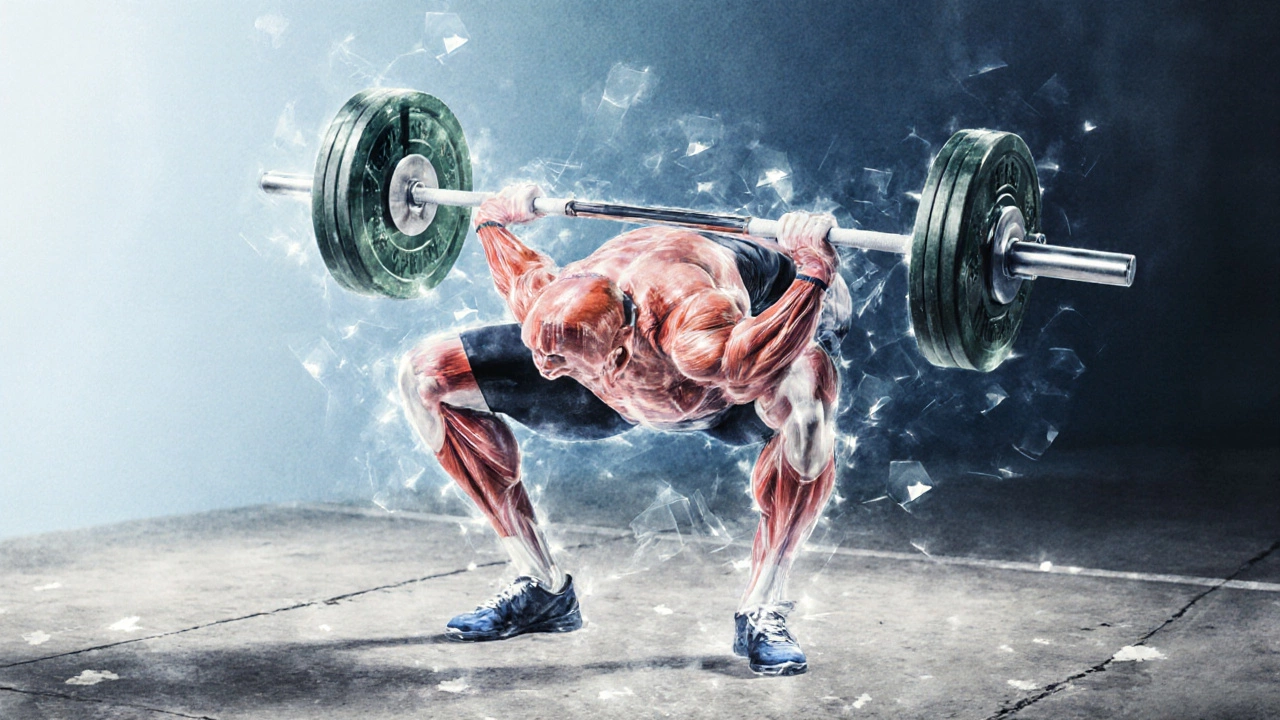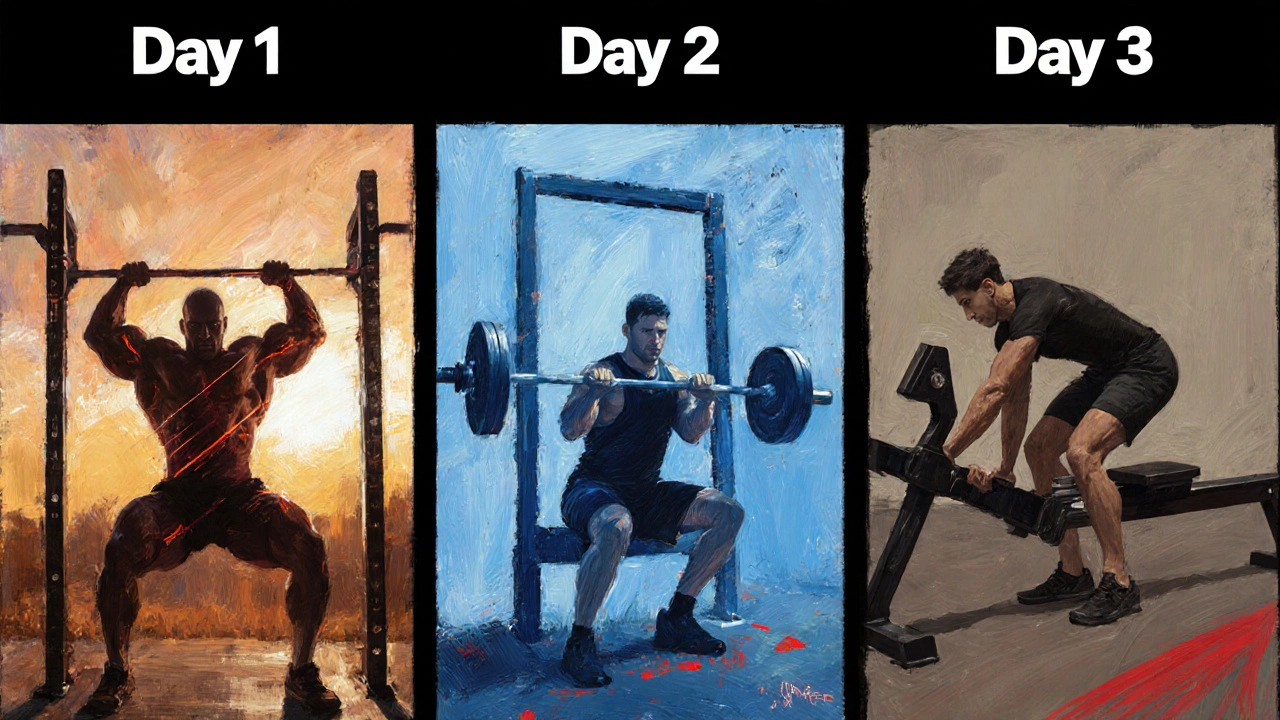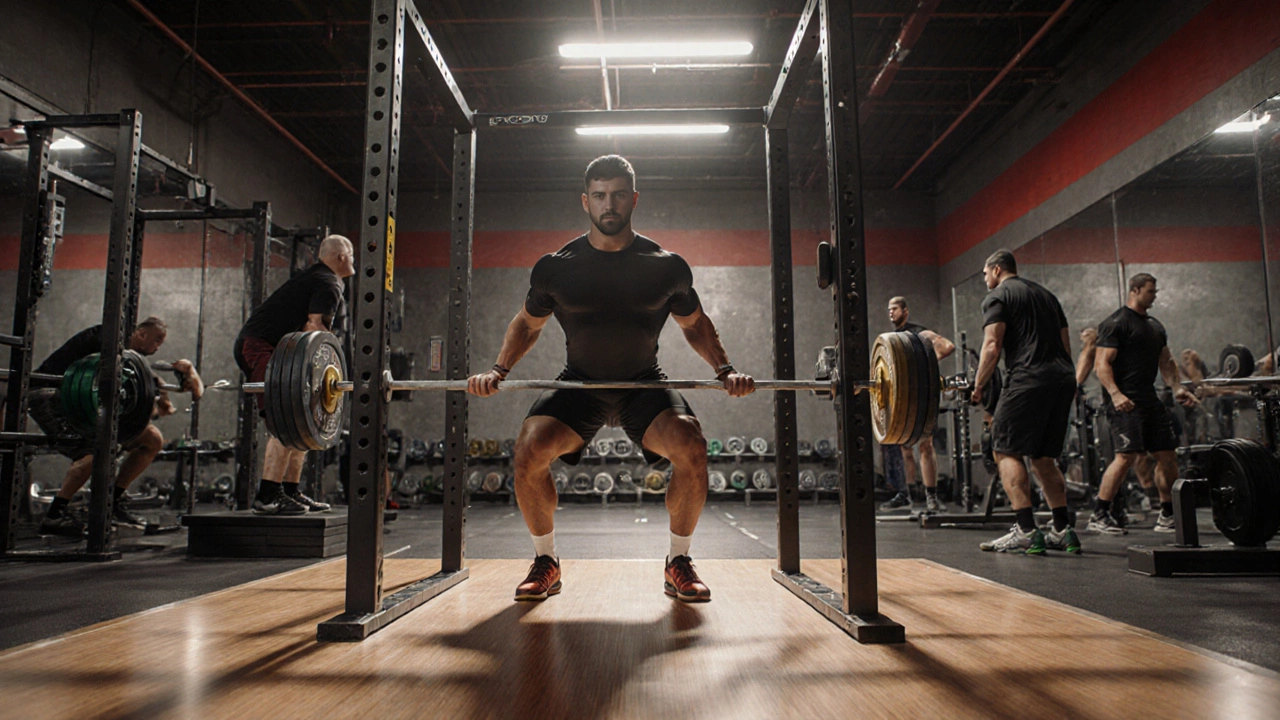Big 5 Strength Progression Calculator
Squat
Deadlift
Bench Press
Overhead Press
Barbell Row
Recommended Progression
Next Week's Weight
Progression Method
Add 2.5 kg
Based on the article's recommendation: Add 2.5 kg if you can maintain proper form for 5+ reps at your target range.
When people ask about the Big 5 exercises are the five core compound lifts that form the backbone of most strength programs. Knowing them is one thing; doing them in the right order is another. This guide walks you through each lift, why the sequence matters, and how to stitch them into a solid routine that works for beginners and seasoned lifters alike.
Quick Takeaways
- The Big 5 are squat, deadlift, bench press, overhead press, and barbell row.
- Start each session with the most demanding, full‑body lift (usually squat or deadlift).
- Follow with upper‑body presses, then the pulling movement.
- Use progressive overload, proper warm‑up sets, and focus on technique before adding weight.
- A simple three‑day split (Push‑Pull‑Legs) covers all five without overtraining.
What Exactly Are the Big 5?
These five lifts hit the largest muscle groups and recruit multiple joints, delivering the most bang for your buck. Because they’re so demanding, mastering them builds a solid strength base for any sport or fitness goal.
Why Order Matters
Doing the heaviest, most technical lift first ensures you’re fresh, which means better form, lower injury risk, and more weight on the bar. As fatigue builds, you shift to less demanding movements that still reinforce the same muscles.

Detailed Look at Each Exercise
Squat is the king of lower‑body moves. It targets the quadriceps, glutes, hamstrings, and core while challenging your balance.
- Key cue: Sit back like you’re sitting into a chair, keep knees tracking over toes.
- Typical sets/reps: 3-5 sets of 5‑8 reps for strength.
- Progression tip: Add 2.5kg plates each week if you can keep depth and posture.
- Common mistake: Letting knees cave inward - this stresses the joint.
Deadlift is the ultimate posterior‑chain builder. It works the hamstrings, glutes, lower back, traps, and grip.
- Key cue: Hinge at the hips, keep the bar close to the shins.
- Typical sets/reps: 4 sets of 3‑5 reps for maximal strength.
- Progression tip: Use a “double‑progression” model - add reps before adding weight.
- Common mistake: Rounding the lower back - protect the spine.
Bench Press hits the chest, shoulders, and triceps.
- Key cue: Keep elbows at about 45° from the torso.
- Typical sets/reps: 3-4 sets of 6‑10 reps for hypertrophy.
- Progression tip: Pause briefly on the chest to eliminate momentum.
- Common mistake: Bouncing the bar off the chest - risk of injury.
Overhead Press (also called shoulder press) works the deltoids, triceps, and upper traps.
- Key cue: Engage the core and glutes to prevent arching.
- Typical sets/reps: 3 sets of 5‑8 reps for strength.
- Progression tip: Start with a “warm‑up ladder” - 40%, 60%, 80% of target weight.
- Common mistake: Locking out the elbows too early, which reduces shoulder activation.
Barbell Row is the primary horizontal pulling movement, targeting the back, biceps, and rear delts.
- Key cue: Keep the torso parallel to the floor, pull the bar to the lower rib cage.
- Typical sets/reps: 3-4 sets of 8‑12 reps for muscle growth.
- Progression tip: Use a “pause‑at‑top” technique to increase time‑under‑tension.
- Common mistake: Using momentum - swing the bar instead of pulling.
Putting the Big 5 in Order - A Sample Session
Here’s a simple three‑day split that respects the priority principle while giving each muscle group recovery time.
- Day1 - Lower‑Body Power: Squat → Deadlift → Core work.
- Day2 - Push Focus: Bench Press → Overhead Press → Triceps accessory.
- Day3 - Pull Focus: Barbell Row → Optional Light Deadlift variation (e.g., Romanian) → Biceps accessory.
On each day start with the most demanding lift (squat or deadlift) when you’re fresh. Follow with the less taxing movement that still offers a solid stimulus.
Programming Tips for Long‑Term Progress
- Progressive overload: Add weight, reps, or sets every 1-2 weeks.
- Deload weeks: Every 4‑6 weeks reduce volume by 40% to let the nervous system recover.
- Periodization: Cycle between strength phases (low rep, heavy) and hypertrophy phases (moderate rep, moderate weight).
- Mobility work: Spend 5‑10 minutes on hip‑flexor, thoracic, and shoulder mobility before heavy lifts.

Common Pitfalls & How to Avoid Them
Even experienced lifters slip up with the Big 5. Spot the red flags early.
- Skipping warm‑up sets - leads to poor form under heavy load.
- Neglecting the posterior chain - imbalance can cause lower‑back pain.
- Training every lift every session - overtraining reduces strength gains.
- Relying solely on the barbell - incorporate dumbbells or kettlebells for variation.
Quick Reference Table
| Exercise | Primary Muscles | Typical Rep Range | Key Cue | Common Mistake |
|---|---|---|---|---|
| Squat | Quads, Glutes, Hamstrings, Core | 5‑8 | Sit back, keep knees over toes | Knees caving inward |
| Deadlift | Hamstrings, Glutes, Lower Back, Traps | 3‑5 | Hinge at hips, bar close to shins | Rounded lower back |
| Bench Press | Chest, Shoulders, Triceps | 6‑10 | Elbows at 45°, controlled descent | Bouncing bar off chest |
| Overhead Press | Deltoids, Triceps, Upper Traps | 5‑8 | Core tight, avoid arching | Early elbow lock‑out |
| Barbell Row | Upper Back, Lats, Biceps | 8‑12 | Pull to lower rib cage, stay flat | Using momentum |
Frequently Asked Questions
Can I do the Big 5 in a single workout?
It’s possible, but you’ll need long rest periods and solid conditioning. Most lifters split them into push‑pull‑leg days to keep intensity high and fatigue low.
Which lift should I start with on a full‑body day?
Pick the most demanding lift for your current weak point. Beginners often start with the squat because it primes the whole body, while experienced lifters may begin with the deadlift for posterior‑chain focus.
How often should I train each of the Big 5?
Two to three times per week works for most people when you rotate the lifts across sessions. A common scheme is Monday‑Wednesday‑Friday with a push‑pull‑leg split.
Do I need a spotter for the squat and bench press?
A spotter adds safety and confidence, especially when you’re near your max. If a spotter isn’t available, use safety bars or a power rack with proper catches.
What accessories help improve my Big 5 performance?
Core stability work (planks, dead bugs), hip mobility drills, and upper‑back strengthening (face pulls, band pull‑aparts) all translate to stronger lifts.
Stick to the order, respect good form, and keep adding a little weight each week. In time you’ll see noticeable strength gains across the board, and the Big 5 will become the foundation of any serious gym routine.
